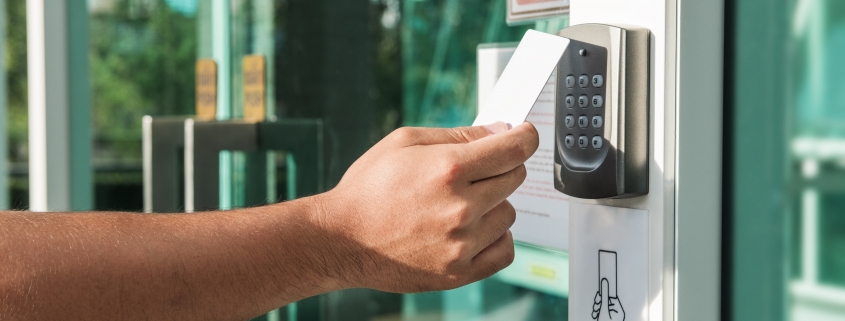Access control credentials link the user to the action. You can determine levels of authorization based on several factors. Restrictions are typically based on security considerations. For instance, you wouldn’t grant access to server rooms to just any employee or visitor.
Choosing the right access method for each area according to credentials is important. Consider whether you need to record credentials for each interaction according to relevant security protocols. When dealing with sensitive and physical products, there is a greater need to track individual access.
Pin Codes or (Personalized Identification Number)
Pin code entryways are ideal for areas accessible to employees and other authorized users. There is no need to set up individual profiles. Each credentialed user can enter the current pin and access the area.
One of the major problems with pin codes is controlling access. If you want to protect valuable products and information, a PIN code in probably not the way to go, it is too easy for an employee to share their PIN code with another employee.
Proximity Cards
Similar to pin codes, proximity cards or tags allow for quick access to authorized persons. However, entry depends on having a card that is pre-authorized regardless of the reader configuration. This reduces the risk of compromise that exists with the pin code method.
Proximity cards are convenient and easy to manage. However, there is a risk of unauthorized access if data is not integrated with other security protocols and/or if the card is shared with others.
Key Fobs
Key fobs rely on manual interaction, meaning that the user has to press a specific button to complete an action. This digital key may control a number of access points, with preprogrammed authorizations that are traceable to the credentialed user.
Depending on the needs of your business, you may find key fobs restrictive. They essentially act like physical keys that use digital technologies. Losing a key fob can restrict access for essential users.
Biometrics
If you have ever traveled through a modern airport, you have likely encountered biometric security. Using unique identifiers such as fingerprints, facial recognition and retinal scanning, biometrics add an advanced layer of security.
Using biometrics reduces the need for physical identification cards and devices. One of the major challenges of this technology is user reluctance to share unique biometric information.
Mobile Credentials
Mobile devices allow for the integration of security technology. You can use mobile credentials to broaden access capabilities for your company. Most modern devices support apps that facilitate confirmation of credentials to various systems.
If you decide to use mobile credentials, it may become necessary to invest in the necessary devices to make access protocols universal. It is therefore important to compare necessity to cost before choosing this option.
QR Codes
With QR codes, you can create unique authentication options. This method is particularly useful when granting temporary access to visitors. If you are struggling to process cleaners, contractors or vendors, consider incorporating QR codes into your security protocols.
Using QR codes takes work and constant maintenance. If you are struggling to decide which access control options are right for your business, contact HS Tech Group today. We specialize in the procurement, installation and integration of security systems in Maryland and Greater DC.






